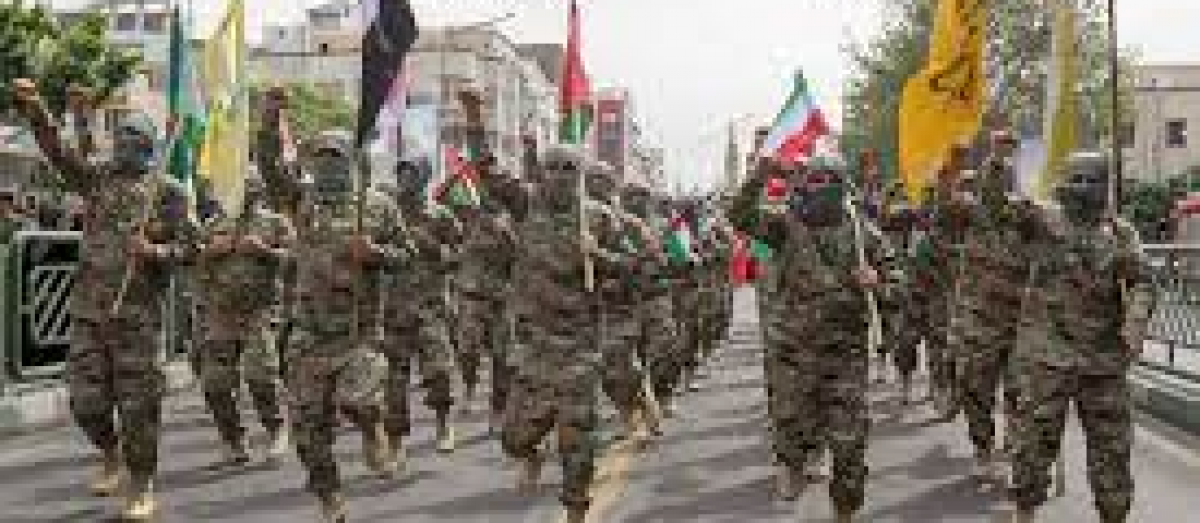
While the United States doesn’t typically employ proxies in the same way as Iran or other regional actors, there have been instances where the U.S. has supported and collaborated with certain groups in the Middle East for strategic purposes. One notable example is the Syrian Democratic Forces (SDF) in Syria:
Syrian Democratic Forces (SDF):
– Backed by: The United States and the international coalition against ISIS.
– Description: The Syrian Democratic Forces is a multi-ethnic coalition primarily composed of Kurdish, Arab, and Assyrian/Syriac fighters. It was formed in 2015 to combat ISIS in Syria with the support of the U.S.-led coalition. The backbone of the SDF is the Kurdish People’s Protection Units (YPG), which is affiliated with the Kurdistan Workers’ Party (PKK), a designated terrorist organization by the U.S. and Turkey.
– Background: The SDF emerged as a key player in the fight against ISIS, receiving extensive training, equipment, and air support from the United States and its allies. The U.S. saw the SDF as a reliable partner in the fight against ISIS due to its effectiveness on the battlefield and its commitment to secular and democratic principles. However, this partnership has been contentious due to Turkey’s concerns about the YPG’s ties to the PKK, which has strained relations between the U.S. and Turkey.
It’s important to note that while the U.S. has supported groups like the SDF for specific counterterrorism objectives, it differs from the proxy relationships seen with Iran, where Tehran exerts significant control and influence over its proxies. U.S. support for groups like the SDF is often transactional and based on shared interests rather than direct control or manipulation.
Let’s examine the proxy conflicts across the broader Middle East region, grouped by country and identifying the proxies and their backers:
Iraq:
1. Popular Mobilization Forces (PMF):
– Backed by: Iran
– Description: An umbrella organization comprising various Shiite militia groups. Many factions within PMF have close ties to Iran and receive support from Tehran.
2. Badr Organization:
– Backed by: Iran
– Description: A Shiite political and military group with historical ties to Iran’s Islamic Revolutionary Guard Corps (IRGC). It maintains close relations with Tehran.
3. Asa’ib Ahl al-Haq (AAH):
– Backed by: Iran
– Description: A Shiite militia group with strong ideological and logistical ties to Iran. It was founded by Qais al-Khazali, who has close links to Iran.
4. Kata’ib Hezbollah (KH):
– Backed by: Iran
– Description: A Shiite paramilitary group closely allied with Iran. Designated as a terrorist organization by the United States.
Yemen:
1. Houthi Rebels (Ansar Allah):
– Backed by: Iran
– Description: Shiite rebels who seized control of Yemen’s capital, Sanaa, in 2014. Iran provides them with weapons, training, and financial assistance. They are fighting against the Yemeni government and the Saudi-led coalition.
Syria:
1. Hezbollah:
– Backed by: Iran
– Description: A Shiite militant group and political party based in Lebanon. Hezbollah receives significant support from Iran, including funding, weapons, and training. It fights alongside Syrian government forces in the Syrian Civil War.
Lebanon:
1. Hezbollah:
– Backed by: Iran
– Description: As mentioned earlier, Hezbollah is supported by Iran and serves as a proxy for Tehran in Lebanon. It has a significant military and political presence in Lebanon and is involved in regional conflicts.
Gaza Strip:
1. Hamas:
– Backed by: Iran
– Description: A Palestinian militant group controlling the Gaza Strip. Hamas receives support from Iran, including funding, weapons, and training. It has fought against Israel and is considered a proxy for Iran in the Israeli-Palestinian conflict.
Saudi Arabia and Gulf States:
1. Yemeni Government (Saudi-led Coalition):
– Backed by: Saudi Arabia, UAE, and other Gulf states; supported by the United States and Western allies
– Description: The internationally recognized government of Yemen, backed by a coalition of Arab states led by Saudi Arabia. It is fighting against the Houthi rebels with support from its regional allies and Western powers.
These examples illustrate the complex web of proxy conflicts in the Middle East, where various groups backed by regional and global powers vie for influence and control. The involvement of external actors exacerbates tensions and complicates efforts to achieve peace and stability in the region.
And, please, don’t take this an an exhaustive list This region is volatile and conflicts can breakout at any time. Iran is not the only Middle Eastern country backing proxies in the region. Several other countries, including Saudi Arabia, Turkey, and Qatar, also support proxy groups to advance their interests and influence regional dynamics.
Saudi Arabia:
Saudi Arabia has been actively involved in supporting proxy groups, particularly in conflicts where it perceives Shiite influence as a threat. In Yemen, Saudi Arabia leads a coalition supporting the internationally recognized government against the Houthi rebels, who are backed by Iran. The Saudi-led coalition includes several Sunni Arab states and receives support from Western allies, including the United States and the United Kingdom.
Turkey:
Turkey has supported various proxy groups in conflicts across the Middle East, including in Syria and Libya. In Syria, Turkey has backed rebel groups fighting against the Assad regime, providing them with weapons, training, and logistical support. Additionally, Turkey has intervened militarily in northern Syria to counter Kurdish groups aligned with the Kurdistan Workers’ Party (PKK), which Ankara considers a terrorist organization.
Qatar:
Qatar has also been involved in supporting proxy groups in the region, particularly in conflicts where it seeks to counter Saudi influence. Qatar has provided support to Islamist factions in Syria and Libya, as well as to Hamas in the Gaza Strip. Qatar’s support for these groups has sometimes put it at odds with its Gulf neighbors, particularly Saudi Arabia and the United Arab Emirates.
These examples highlight that proxy wars in the Middle East involve multiple regional actors vying for influence and control. While Iran is a significant player in supporting proxies, other countries in the region also engage in similar tactics to advance their interests and shape the geopolitical landscape.

